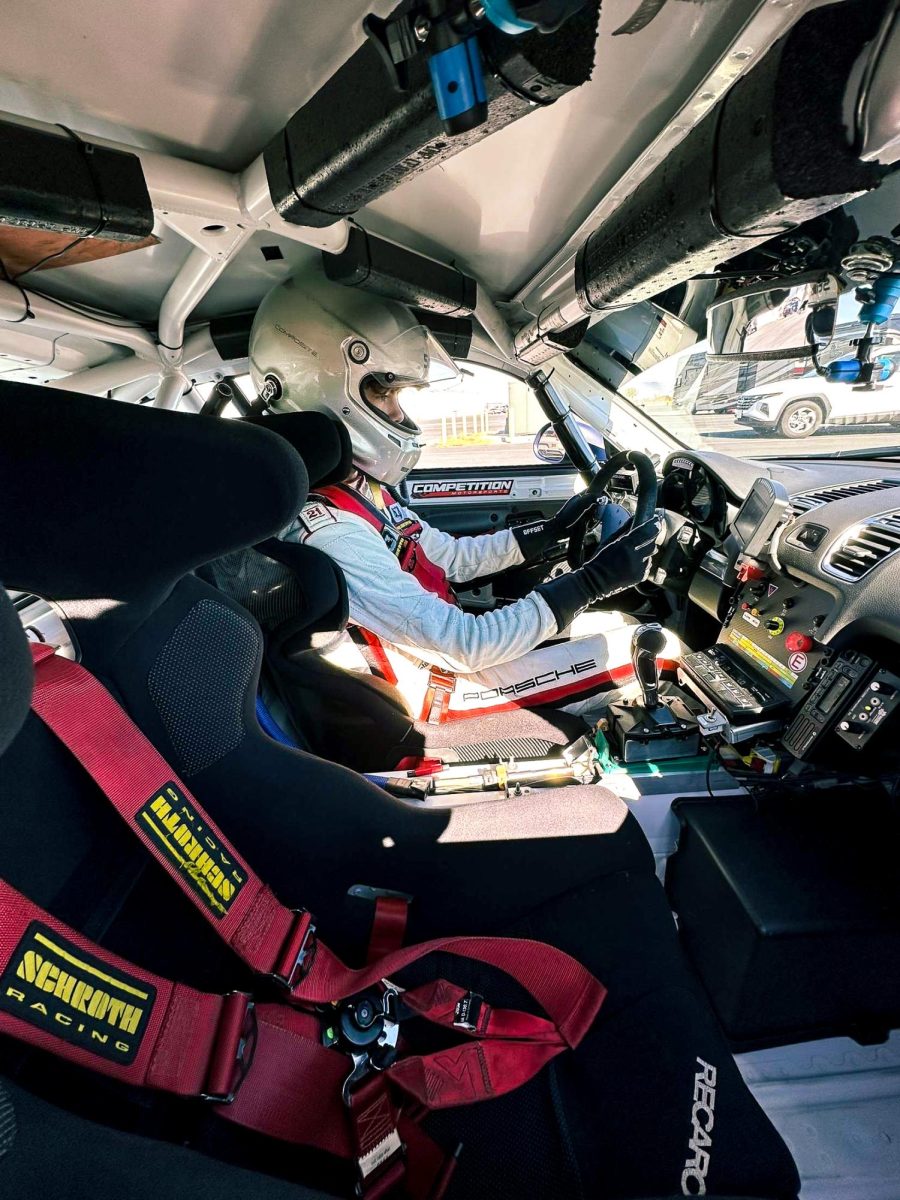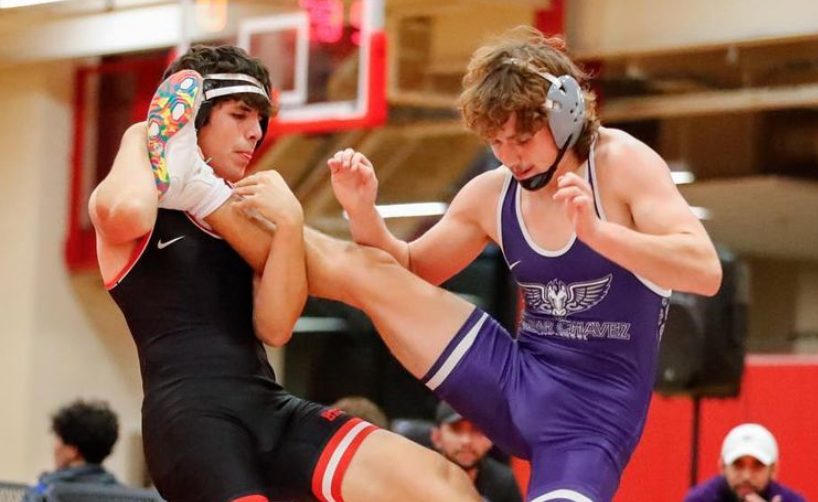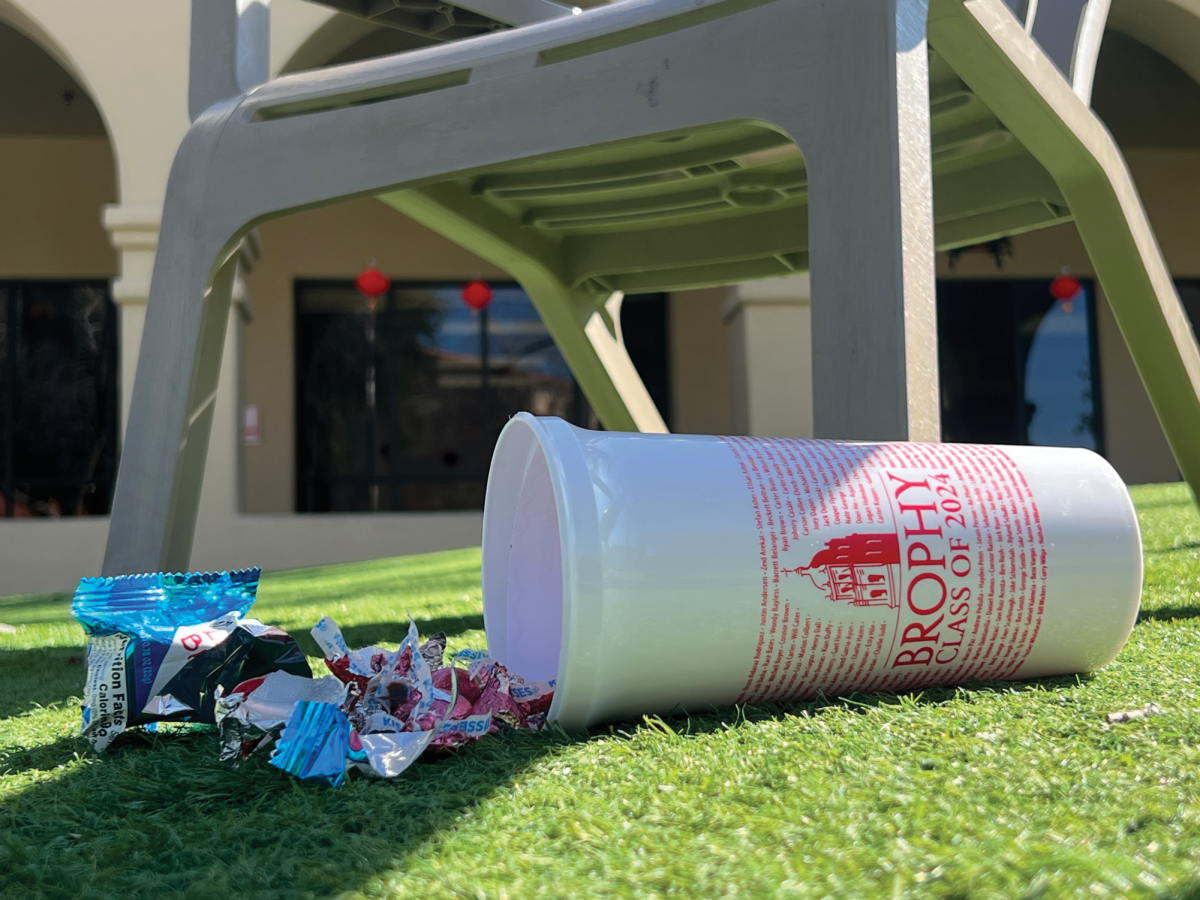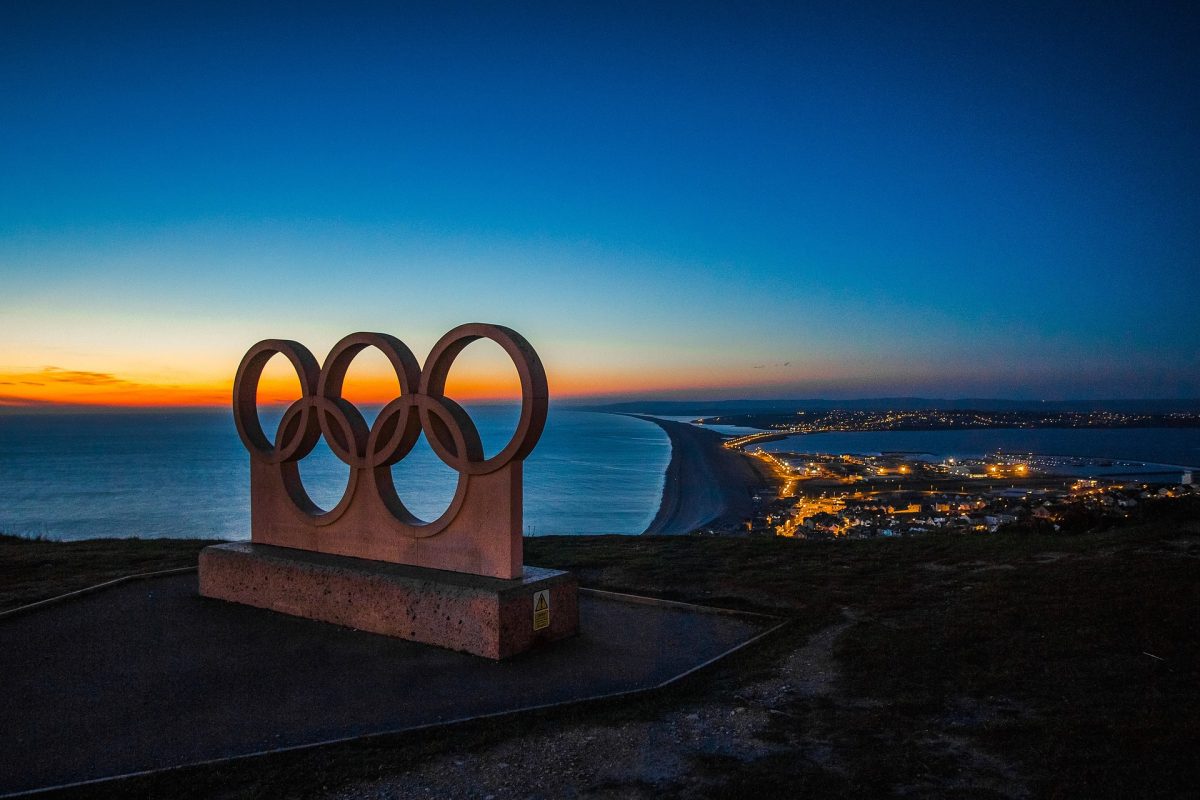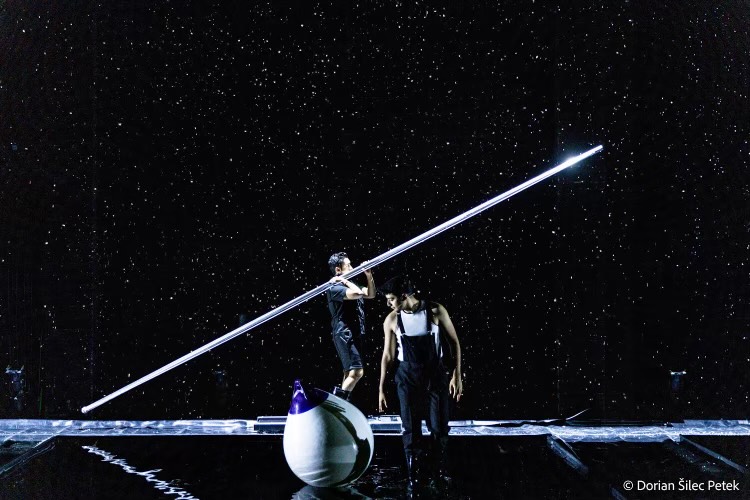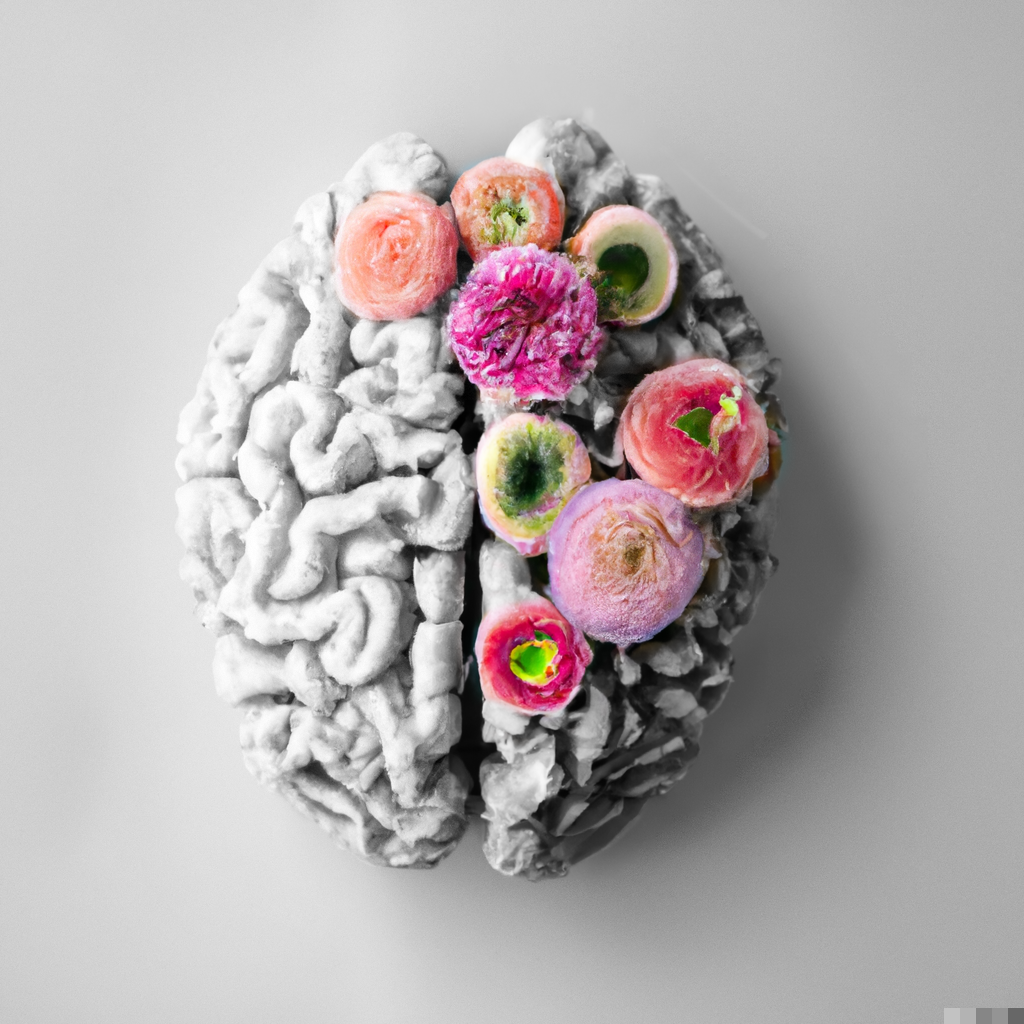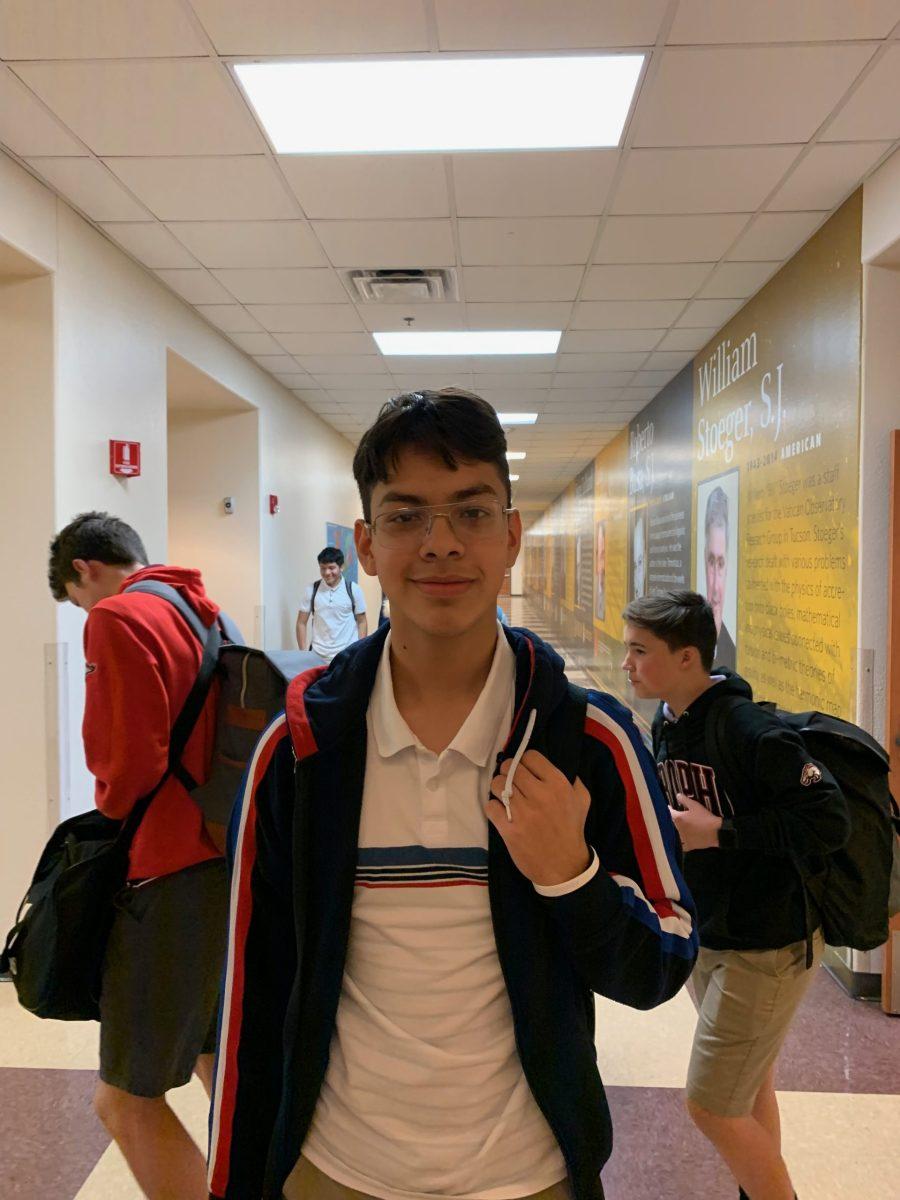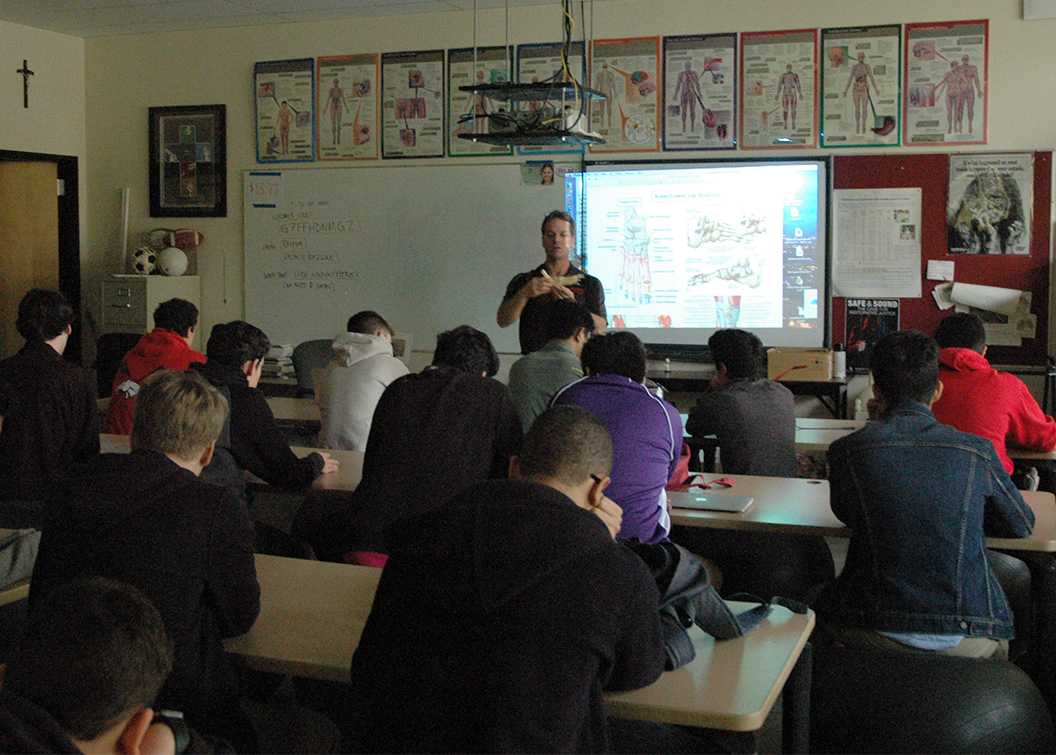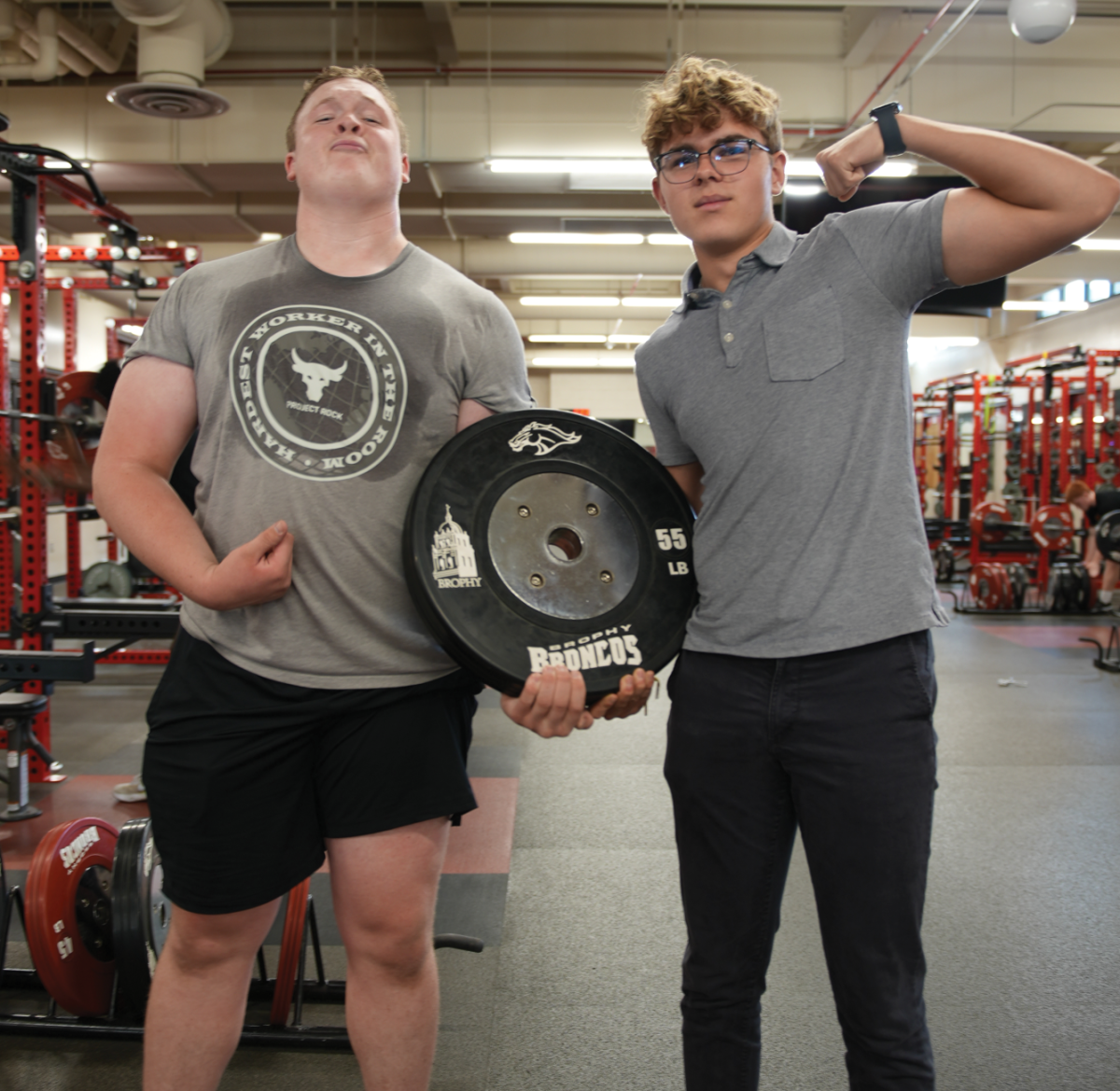Photo by Andrew Brown ’18 | Mr. Chris White teaches his sixth period sports medicine class on January 17, 2017 about bone structure in the foot.
By Jack Davis ’19
THE ROUNDUP
Mr. Chris White has been apart of the Brophy community for three decades.
Throughout his time at Brophy as an athletic trainer, he has also transitioned into a teaching role after his time instructing a health class and developing a unique sports medicine and anatomy curriculum.
“I’ve always had an interest in teaching,” Mr. White said. “But really my passion was athletic training. I went to graduate school at the University of Arizona for athletic training … and then got a job at Brophy.”
Mr. White said that he originally started teaching Health, and then later began to propose his own classes like Sports Medicine and Anatomy.
Junior-varsity basketball player Dalton Hogan ’19 said that Mr. White is devoted to his job and his teaching method is effective.
“I think he’s a great teacher,” Hogan added. “He has a sense of humor, he breaks it down to the point where it’s not so like, ‘Woah, this is all over my head.’ He organizes each unit really well according to all of the different levels. I think he’s a great guy.”
Hogan takes Mr. White’s sixth-period Sports Medicine class.
Hogan said one reason why he took the class is that he wants to go into a medical profession.
“I’ve always been interested in the body, athletics,” Hogan said. “I thought, two things I like: sports and medicine, it was tailor-made for me.”
Hogan said that he enjoys the hands-on classroom experience.
“I like the hands-on activities,” Hogan said. “We do a lot of hands on things whether it’s palpitations where he tells you to go a certain structure and you go to it. We get to learn how to use the Bod Pod, we get to administer the sway-balance test to all of the winter-sport athletes. A lot of the hands-on activities, it’s good to know it but then also to practice it.”
Mr. White agreed about the large amount of hands-on learning and said that the students learn primarily musculoskeletal anatomy with a list of competencies and skills that they need to check off.
Mr. White realized the necessity of a sports medicine class after several students displayed interest.
“I started here in 1986, even then I had a couple students to help me then,” he said. “I had students coming in after school, and then I thought, to really make this work, I wanted to give them more knowledge and more skills.”
Mr. White has been teaching Sports Medicine for 25 years. He originally taught one class per semester, but now he teaches two which are period six and seven.
Along with Sports Medicine, Mr. White also teaches an Honors Anatomy and Physiology class.
“I took it because I was done with all of my science credits and it’s an elective class,” said runner Quinten Argiropoulos ’19. “I was interested in learning more about the body and diving deeper into its functions and how it works.”
“The class is more of a lecture class,” Argiropoulos added. “Although we often do watch videos to help us understand topics and there’s often labs. We’re dissecting a brain later this week.”
Argiropoulos said that White’s experience helps him teach Honors Anatomy and Physiology.
“It has lived up to my expectations,” he said. “I’ve already been able to develop a more thorough understanding of the body on a small scale as well as a large scale.”
Mr. White said that he enjoys teaching anatomy, primarily assessment.
“I really love teaching anatomy,” he said. “The anatomy component to me is always fun. I think everyone should know about his or her body and how it works and how to prevent problems and injuries … I like teaching people how to evaluate injuries so they can determine what’s going on. I love every phase of it, but if I would say if I were to narrow it down I enjoy the anatomy and assessment part. I like teaching young people.”
Mr. White said that the two classes are different.
“Sports Medicine is a one-semester P.E. elective class,” Mr. White said. “I have freshman through seniors, four different levels …. It’s really focused on musculoskeletal problems and issues.”
“Anatomy is a year-long science elective where we hit every system in the human body,” he added. “It’s much more in-depth in terms of anatomy and it covers a lot more than just musculoskeletal. We do every system, all of the organs, tissues, structures, how they work and how they function. It’s a lot deeper and broader of a subject.”
Hogan said that Sports Medicine has helped him diagnose, prevent and treat injuries.
“Being an athlete myself, it helps me realize what my injuries are and how I can prevent certain things from happening,” Hogan said. “My friends will say, ‘something is hurting over here.’ I can anatomically break it down using anatomical language that medical professionals use and it’s taught me a lot.”
Hogan said that people should take Sports Medicine regardless of whether they are involved in athletics or not.
“You don’t even have to be an athlete to take this,” he said. “All people should know how their body works, how it moves. We all have a body.”
Argiropoulos seconded Hogan’s notion that athletic classes help with playing and watching sports.
“It has helped me by knowing proper methods to not go too hard and methods that better strengthen your muscles and keeping different muscle strength in your body,” he said. “It helps you run better and not injure yourself.”
“Honestly, it helps me understand football injuries more and stuff,” he added. “Whenever someone tears something, I actually know where it’s located.”
Hogan said that in order to attract more interest to sports medicine as a whole, it should be credited as a lab science rather than a semester of a P.E. credit.
“It’s a course that should definitely be credited as a lab science,” Hogan said. “I think that if it was credited as a lab science, we would have a lot more people in sports medicine. Chemistry, physics and all that stuff is great but I definitely think that if it was a lab science a lot more people would take it.”


